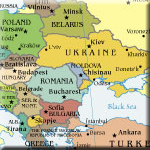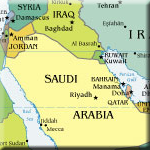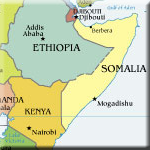




The reader will have noticed that the dangers and pitfalls are many in a post-conflict country’s effort to recover and that foreigners trying to help that country may easily make things worse if they do not step carefully. The following is an effort to extract a number of rules out of the preceding chapters. We have divided these rules into two groups, the essential ones that must be followed at the risk of failure, and those, which, while not essential, are important and useful.
Humanitarian aid must help all those who have survived the war to also survive the post-war chaos. By and large, this has worked well in recent years, but developed countries must continue and sometimes expand their support of humanitarian aid (see Chapter 5).
Establishing internal security in all but the most remote parts of the post-conflict country is the first order of business and a pre-condition for any meaningful effort of socio-economic recovery and physical reconstruction (Chapter 5).
Partitioning a country or creating a loose confederation may be the only affordable way to establish stability in some post-conflict countries. Partitioning must be done with full attention being given to protecting the rights and lives of minorities, ensuring access of all parties to international trade routes, and sharing fairly the benefits of the country’s mineral wealth (Ch. 3.1).
Establishing protectorates and quasi-colonies is incompatible with introducing Western-style democracy. Foreign military intervention, frequently needed to end a war, should rapidly be followed by the establishment of a local civilian government, with the role of foreign military or civilian administrations limited to protecting minorities, ensuring internal and external security and preventing the rise of dictatorship (Ch. 3.2).
Planning and execution of recovery and reconstruction must concentrate initially on the highest priorities. These are, in addition to humanitarian aid and internal security, re-launching the productive sectors of the economy, mainly agriculture and small enterprises, supported by adequate supply of power, water and transport services, a public administration that helps, rather than hinders economic recovery and growth, and a rapid revival of education and health services, foremost at the primary level (Ch. 4).
The newly established government will probably have its full share of violent and criminal enemies, such as warlords in Afghanistan and criminal gangs in Serbia. Rapidly depriving these elements of their destructive power, if necessary with the help of foreign military and police forces, is essential (Ch. 6.1).
It is imperative that the donors finance the revenue gap in an agreed budget, with adequate controls being put in place (Ch. 7.4).
The most important donor countries – mainly the U.S., the E.U. and Japan – operate massive systems to protect their domestic agriculture and labour-intensive industries. Short of abolishing these systems, donor countries should grant exceptions to post-conflict countries. Without that, there is little chance to revitalize the economies of post-conflict countries (Ch. 8 and 9).
Post-conflict countries should develop a transparently managed open economy with a strong private sector (Ch. 8.2 ).
Post-conflict countries must establish a functioning monetary system with a viable currency, if necessary through using foreign currency as legal tender or through establishing a currency board (Ch. 8.2).
Donors must rapidly provide comprehensive assistance packages to farmers so as to make farms fully operational in less than one year. Urgent farm inputs, mainly seeds, must be delivered to farmers in time for the next growing season. Assistance to farmers should be provided in the form of grants for reasons of both equity and efficiency (Ch. 9.1).
Creation and development of many small and medium sized enterprises is critically important for economic recovery and growth. A large, demand-driven program must be designed and implemented, starting at a very early stage of post-conflict recovery. Would-be entrepreneurs should receive at least half of their support in the form of grants (Ch. 9.2).
Reconstruction and reequipping of infrastructure, health and education facilities should be designed to satisfy the post-conflict country’s expected needs for the next five to eight years, but not normally beyond that. The country must be able at the end of the reconstruction period to fully operate and maintain the proposed facilities from its own resources with only limited technical assistance. If that is not expected to be the case, the reconstruction program must be redesigned, with affordability being the guiding principle (Ch. 10).
Donors must fully finance a technically and economically sound recovery program with regard to both, the total amount of funds needed, and the financing requirements of specific parts of the program. Cash requirements, mainly to balance the new government’s budget as approved by the IMF, must be fully met by the donors. Adequate controls of the post-conflict government’s use of cash should be implemented (Ch. 11).
Donors should appoint a lead agency to coordinate and direct implementation of the recovery program. The lead agency would be accountable to the donors for achieving agreed benchmarks of the program. It would have the authority to redirect donors’ funds to important but underfunded parts of the program (Ch. 11.2).
The local army or armies should be disarmed but not dissolved. Individual soldiers should only be demobilized when they can reintegrate civilian society (e.g. a local community). Until that time they would be part of a public reconstruction work force (Ch. 5).
Preparing a good recovery plan takes time, about six months for a medium-size country, including the time needed to assemble a team and to discuss the plan with local leaders. Accordingly, it must be started early, at a time when the prospect for peace may still be very much in doubt. In the case of foreign, mainly Western, military interventions as in the Balkans, Afghanistan and Iraq, the planning for post-war recovery must be done in parallel with the preparation of war (Ch. 4.4).
Developed countries should put an end to the widespread support given to rebel groups by the country’s diaspora residing in developed countries. Instead, diasporas should contribute to reconstruction (Ch. 6.1).
The problem of the probably very large skills gap in most post-conflict countries should be resolved not simply through the use of foreign experts, but through the training of local staff, temporarily supported by technical assistants (Ch. 6.2).
Both common sense and fiscal constraints call for a small army with simple, defence-oriented and easy-to-maintain equipment (Ch. 7.1).
The new government should strive to provide free general primary education and basic health services, but should charge for secondary and advanced education and health services (Ch. 7.2).
The civil service should be kept small but should be paid well and regularly (Ch. 7.3.1).
State-owned enterprises tend to incur large financial deficits that are frequently covered by the general budget. This is unaffordable and ways must be found to reduce these deficits. Concessions are a useful vehicle to address this problem (Ch. 7.3.2).
An elaborate state-sponsored social safety net, if it existed before the war, may no longer be affordable. However, the new government should make every effort to provide a minimum livelihood to the genuinely needy, at least partly in kind with the help of donors. The government and donors should ensure through vigorous controls that assistance actually reaches the intended beneficiaries (Ch 7.3.3).
Given the weakness of the post-conflict economy and the country’s civil service, the system of taxation must initially be kept very simple, maybe limited to a uniform customs duty on imports and excise taxes on alcohol, tobacco and transport fuels (Ch. 7.4).
Food aid should be freely distributed to prevent famine. Other food aid should be given to the post-conflict government for resale on local markets at prices that do not destroy local agriculture (Ch. 8.2).
Post-conflict countries should for a transition period of three to five years protect their agricultural producers and their manufacturers through targeted import duties. This would give them a chance to regain strength and to become internationally competitive (Ch. 8.2).
Post-conflict countries should liberalize international movements of capital only gradually over several years (Ch. 8.3).
Post-conflict countries should welcome foreign direct investment, but should carefully scrutinize each proposal (Ch. 8.3).
If privatisations of public enterprises are not possible or not advisable, post-conflict countries should consider using management contracts or concessions to improve the efficiency of these enterprises. Workers becoming redundant as a consequence of concessions should receive donor-financed redundancy packages, mainly cash payments. Donors should also assist both financially and technically qualified redundant staff to become small entrepreneurs, mainly artisans in trades which are in high demand during the reconstruction period (Ch. 8.3).
Public utility tariffs should be set in such a way that services remain affordable for the majority of people. This may necessitate, at least for a transition period, the continued payment of subsidies for selected public utilities, mainly water, electricity and public transport (Ch. 8.3).
Commercial banks and larger enterprises should not simply be revived in an effort to recreate the pre-war situation. Instead, the opportunity of the post-conflict crisis and the openness to reform that normally accompanies this crisis should be used to restructure the banking and enterprise sectors with the objective to create a structure that is well adapted to the post-conflict country’s needs and opportunities. A bank and enterprise restructuring program of this type will necessitate significant donor financing, partly in the form of grants and partly in the form of medium to long-term loans (Ch. 9.3).
Implementation of the recovery program should be the responsibility of the post-conflict government, with technical assistance being provided as needed. The creation of specialized implementation agencies should be avoided, and donors should abstain from implementing programs without the government’s concurrence (Ch. 11.2).
In procuring goods and services for the recovery program, competitive bidding should be the rule. Negotiation of contracts with individual suppliers should occur only in emergency situations and only during the first few months after the end of the war for contract periods that should not exceed six to nine months (Ch. 11.2).
The lead agency appointed by the donors should prepare periodic progress reports for the donor’s review (Ch. 11.2).
Many of the preceding thirty-five rules and recommendations are contrary to current practice, and it may be naive to believe that any politician will follow them. However, not all politicians are as narrow-minded, short-sighted and prejudiced as popular opinion believes them to be. Some people in power understand the dangers inherent in letting untreated the disease of numerous wars and their destabilising influence on the world as we know it. They understand that the ‘War on terror” must be more than a police action of global proportions. Current events in Iraq and other places demonstrate once again how little military might can achieve when nothing is done to remedy the ills of society. Winning the peace means, more than anything else, winning the war against poverty, illiteracy and unemployment.